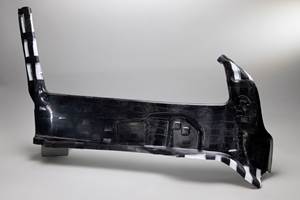Tailored thermal treatment systems for composites
CAMX 2025: Muenstermann’s custom-engineered convection- and radiation-based drying and heat treatment systems are engineered with efficiency and sustainability in mind.
Share
Custom-built annealing oven for carbon fiber tubes, pictured at Muenstermann’s production facility prior to delivery. Source | Muenstermann USA Inc.
(Chicago, Ill., U.S.), the North American subsidiary of Bernd Münstermann GmbH & Co. KG (Telgte, Germany) is featuring its custom-engineered thermal processing systems specifically designed for the composites industry. Rather than offering off-the-shelf equipment, Muenstermann develops convection- and radiation-based drying and heat treatment solutions built from the ground up to match each customer’s product, process and space requirements.
Whether drying prepregs, treating fiber mats or preheating composite structures, Muenstermann systems offer precise temperature control, consistent airflow and peak thermal uniformity — all essential to achieving optimal curing and product quality. Systems can be augmented with infrared modules and are always adapted to on-site constraints, including integration into existing lines and limited production footprints. For sensitive applications, ovens can be designed for inert operation and are also available in explosion-proof configurations.
What sets Muenstermann apart is the “engineered-to-order” approach. Process parameters such as temperature profiles, dwell times, humidity levels and flow velocities are not generic defaults — they are calculated, tested and applied to meet the exact requirements of each customer’s application. Trials and process validations can be conducted in Muenstermann’s in-house R&D Test Center, helping customers simulate real production conditions before system design. This ensures that composites manufacturers benefit from a system that is not only reliable and efficient but also perfectly aligned with their production goals.
According to the company, energy efficiency and sustainability are not afterthoughts but rather embedded in the engineering process. By tailoring systems to the precise thermal needs of the product, unnecessary energy input is avoided from the outset. Additional features such as integrated heat recovery, variable-speed fans and intelligent insulation further reduce operating costs and environmental impact.
Visitors can learn more about how customized thermal systems can drive both product performance and long-term energy savings.
Related Content
-
Prepreg range targets versatility, low CO2 impact
CAMX 2025: Prepreg partner SHD Composite Materials supports tooling, component and structural needs with resin system solutions like FR308 and MTC400-1.
-
Highly tunable, woven lattice reinforcements target automotive structures
CAMX 2023: Startup Weav3D will be demonstrating its two collaborative automotive demonstrator parts and present two conference papers.
-
Repurposed carbon fiber waste support closed-loop recycling goals
CAMX 2025: Work with Carbon Fiber Conversions, a supplier and a strategic partner, to transform carbon fiber waste into a valuable resource, strengthening both business and sustainability credentials.
Related Content
Prepreg range targets versatility, low CO2 impact
CAMX 2025: Prepreg partner SHD Composite Materials supports tooling, component and structural needs with resin system solutions like FR308 and MTC400-1.
Read MoreHighly tunable, woven lattice reinforcements target automotive structures
CAMX 2023: Startup Weav3D will be demonstrating its two collaborative automotive demonstrator parts and present two conference papers.
Read MoreRepurposed carbon fiber waste support closed-loop recycling goals
CAMX 2025: Work with Carbon Fiber Conversions, a supplier and a strategic partner, to transform carbon fiber waste into a valuable resource, strengthening both business and sustainability credentials.
Read MoreMaximize your experience: CAMX 2025 exhibit previews, Part 1
This list of 90+ exhibitor previews solicited by CW offers a glimpse into the various technologies, emerging trends and solutions attendees should look for on the CAMX show floor.
Read MoreRead Next
Epcon delivers integrated composite curing oven, RTO system
Patented solution supplied to an adhesives and sealants manufacturer effectively tackles precision curing and VOC emissions control.
Read MoreCutting 100 pounds, certification time for the X-59 nose cone
Swift Engineering used HyperX software to remove 100 pounds from 38-foot graphite/epoxy cored nose cone for X-59 supersonic aircraft.
Read MoreScaling up, optimizing the flax fiber composite camper
Greenlander’s Sherpa RV cab, which is largely constructed from flax fiber/bio-epoxy sandwich panels, nears commercial production readiness and next-generation scale-up.
Read More









